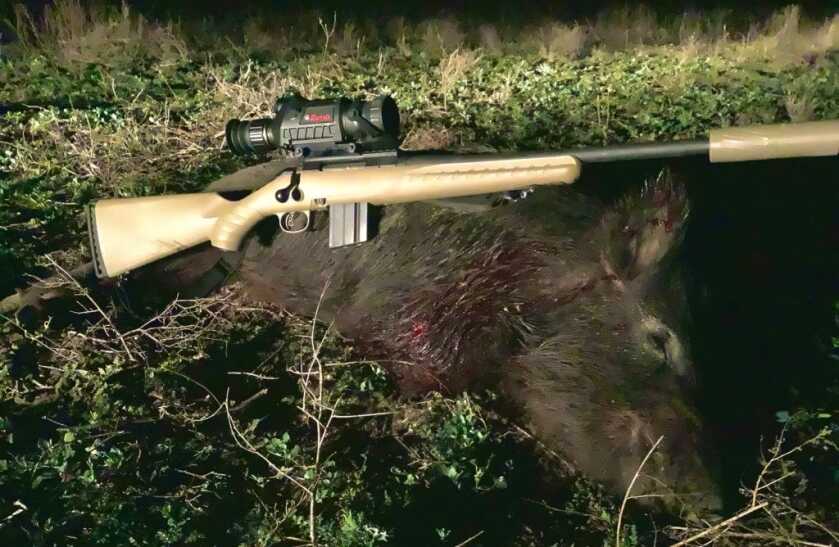
In today’s market, new technology either makes things expensive or it makes things less expensive. Let me elaborate, technology can either be much improved and make new things expensive or it can take relatively new things and improve the manufacturing processes and simplify things and make it cheaper. That is what has happened to the Thermal Imaging market, the new extreme high-tech units are bringing 10k to 20k dollars on the retail consumer market. On the other end, manufacturers are offering lower-priced units that allow many of us to enjoy the benefits of thermal imaging.
Burris has entered this arena. Burris has been in the optics game a very long time and they bring an excellent reputation to a field of manufacturers that many may have not heard of before. They are bringing 3 basic units out, a handheld unit, a clip-on unit, and a stand-alone rifle scope. These optics will provide much more affordable thermal imaging to the masses, with retail pricing being 1999.00 – 2199.00 for the handheld, 2749.00 – 2999.00 for the rifle scope, and 2999.00 – 3199.00 for the not reviewed clip on.

Thermal imaging is not what we see on TV, it won’t tell you how many people are in a room through a wall. It cannot physically give you a heat signature through anything that reflects or gives off heat of its own. It will not see through glass and tell you what’s on the other side. If you think about it logically you begin to understand there is nothing mystical and magical about it.
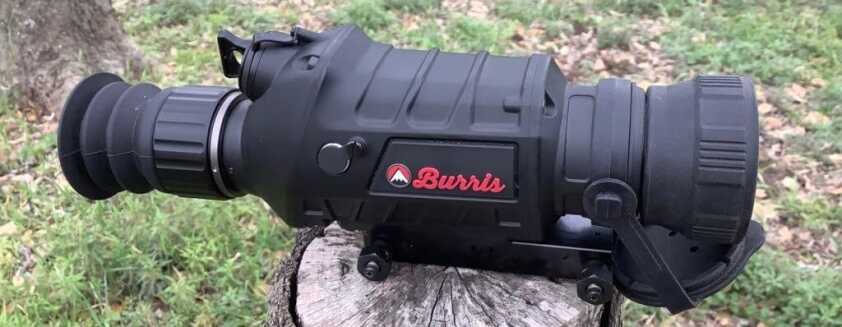
As you scan across whatever you’re looking at, it adjusts the image that it sends to your eye. This adjusting is what is known as a refresh rate, it is the rate at which the unit refreshes the image seen by your eye. Other than focus, and pixelation this is probably the most important feature that the end-user will have an opinion on. If the refresh rate is slow it makes for a very tedious and frustrating usage of the unit. The refresh rate on both the handheld unit and the rifle scope is the same at 50hz. this rate is fast and should provide excellent performance.
I have been using a high-end unit for the last 5 years for destructive animal abatement and have gotten used to the benefits thermal brings. The Burris units are aimed directly at the users that want to get into thermal but not sink 10+ thousand into an optic. They also take advantage of developments in technology that have allowed things to be simplified and made less expensive. At the same time, they are offering excellent features that are important to us in the civilian market.

I’ll be comparing the handheld scanning unit and the stand-alone rifle scope, the clip-on version was not sent to me. The riflescope is very comparable in both size, nominally 9.75×3.75 inches, and features to the handheld, nominally 8.5”x3” inches, and makes the handheld probably seem redundant.
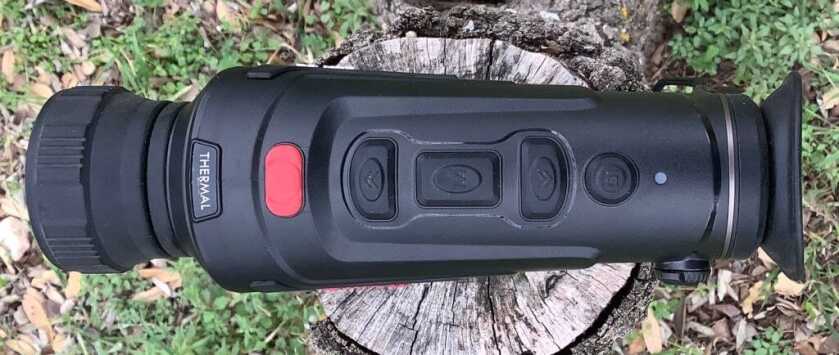
However, if you have absolutely no need for a weapon’s sight, as in a first responder team that needs thermal imaging for use in search and rescue. Then this unit is lighter and easier to hold in the hand for long periods of time. It also has the capability of viewing and recording through your phone with the proper connector.
We’ve already mentioned the refresh rate is top-notch. Also, the projected image size inside the units is a nice large size, making for an easier image for the eye to look at. Resolution on the handheld and the rifle scope is 400×300, and this size remains constant regardless of whether it is the 35mm or 50mm rifle scope or 25mm, 35mm, or 50mm handheld.
Digital zoom for both units is rifle scope 1x, 2x, and 4x and handheld is 1-4x. The zoom on the handheld is simple to activate simply using the up or down buttons on top of the optic. On the rifle scope you use the roller button and roll up or down, the magnification is shown on the screen. On a side note, the 25mm is only available for the European market.
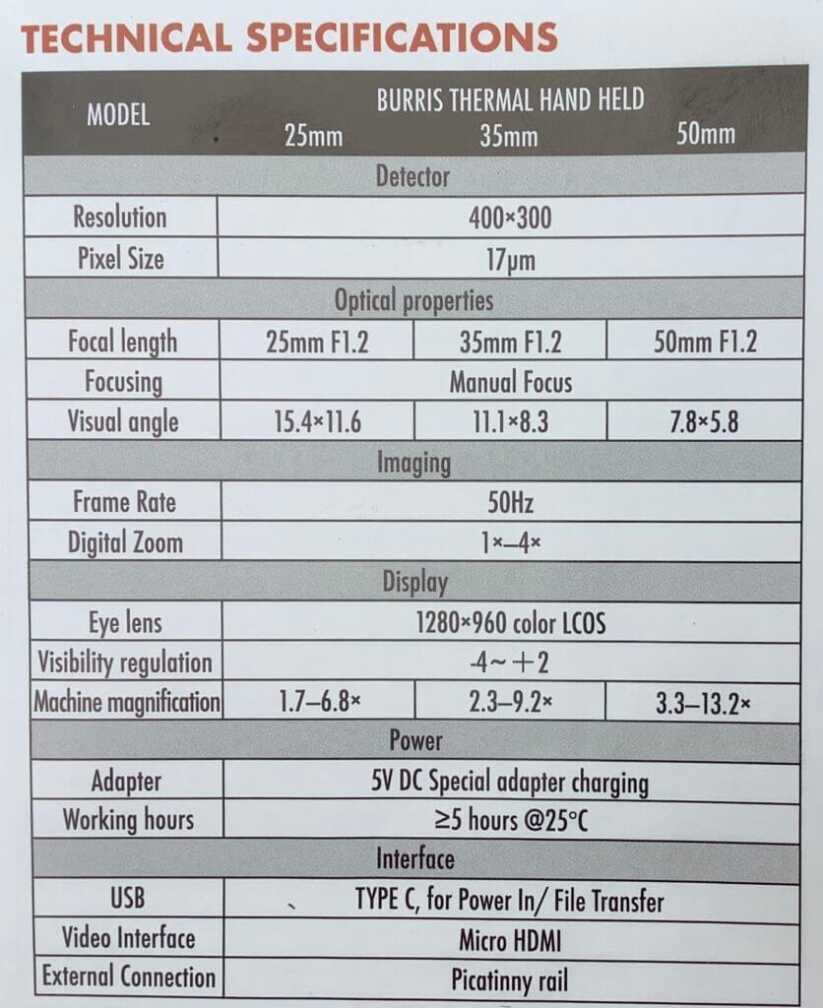
On the handheld unit, I initially struggled to achieve what I found to be an adequate focus for my eye until I discovered a little adjustment on the side called the diopter knob. Adjusting this allowed for great image quality and focus range.

Swapping over to the rifle scope it proved to be super easy to achieve an excellent focus for my eye. Adjusting Contrast and Brightness allows for a very good image to be selected, and makes identification of what you’re looking at easy. The rifle scope was able to provide a sharp enough image to adequately identify pigs from deer or cattle out to 400 yards. This allows us to prevent “stalking” non-target animals as well as preventing an expensive mistake should a shot at distance be attempted.
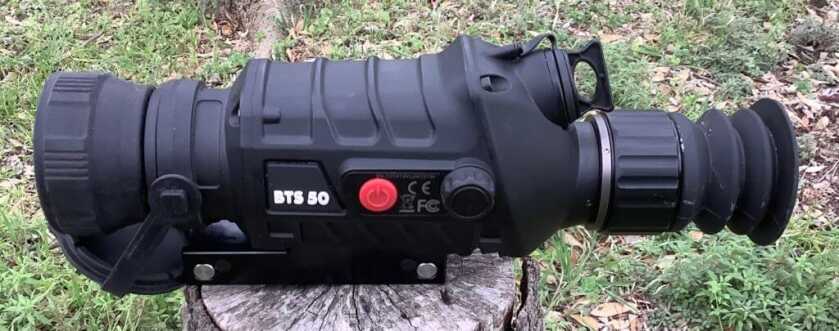
There are 10 reticle variations, a suitable one should be easy to find. I chose #7 since it more closely resembles my favorite hunting reticle. The reticles are also available in a choice of colors so selecting a contrasting color is easy. The palette options are white-hot, black-hot, red-hot 1,2, and 3, as well as green-hot and blue-hot. Even when using the “White Hot” palette the white reticle was easy to see against a hot target.
The Auto-Off feature is a nice way of protecting your power source; on the handheld, it is a factory default setting, on the rifle scope you get to select the time period and it not being a factory setting is very nice. Your choices are Off, 15min., 30min., and 60min., in my use I can spend 15 minutes scanning a field or area looking for my targets. I selected 60 minutes for Auto-Off, but a new user may choose less time. A word of caution here, if you choose something in the 30min. or 15min. range it would be possible for the optic to turn itself off while you are trying to stalk up on an animal or even while you’re aiming at it. Since powering back up does take a bit of time it can be quite unnerving having to wait while your target is out there somewhere on the move.
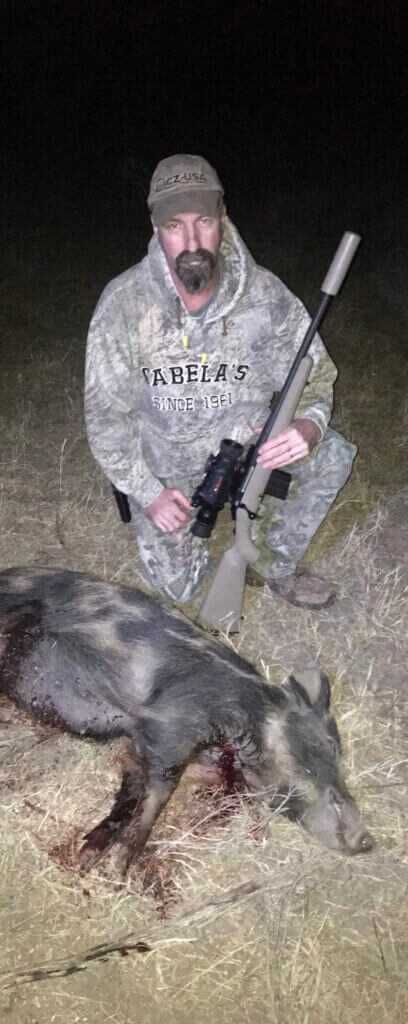
The power source and longevity of power for each unit are different, the handheld is, give or take 5 hours at 25* Celsius, and uses a rechargeable 5v DC system that uses the charging cable that comes with the optic. The riflescope uses a single 18650 rechargeable battery that comes with the optic, however, you can also substitute two CR123a batteries. This is nice in case your rechargeable battery dies in the field and you haven’t got another. On the 18650 battery, you get approximately 3 hours of use, with a high output 3400mAh battery you get upwards of 5 hours. So having a backup set of batteries could be nice on long nights. A nice feature about the power is that batteries can be installed either positively or negatively, it does not matter. A quite handy feature when having to change batteries in the dark and in the field.
Zeroing a thermal rifle scope is a bit confusing compared to a normal rifle scope, but it works the same on every thermal unit I’ve used. Normally you would fire a group and then adjust that group to be at the junction of your crosshairs. On the thermal unit, you adjust the crosshairs to the group, much like you would a bow sight or adjustable front sight. You take the sight to the group, not the other way around. I was unable to locate the information showing the value for the increments used to zero the scope as well as information on what direction the + and -, or the X and Y axis actually move the reticle in the owner’s manual. There is a short video available on the website if needed.
The rifle scope when mounted on my rifle where it worked best with my cheek weld did not allow operation of the bolt handle, simply due to an attachment bolt impeding the bolt handle. Burris has informed me that the mount that comes with the optic is designed for an MSR platform, however, a mount for bolt actions is available. If the securing nut was on the other side there would not have been an issue.
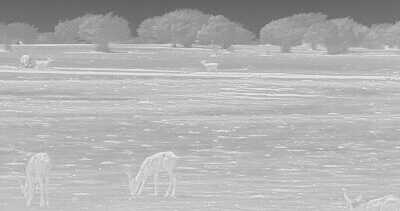
In use out in the field, when I was by myself I found the handheld unit spent most of its time sitting in the passenger seat not being used. When I arrived at my various overlook spots, the rifle was grabbed with the thermal scope on it and scanning was done using it. However when a guest was involved, giving them a thermal unit that was not attached to a gun was a great benefit.
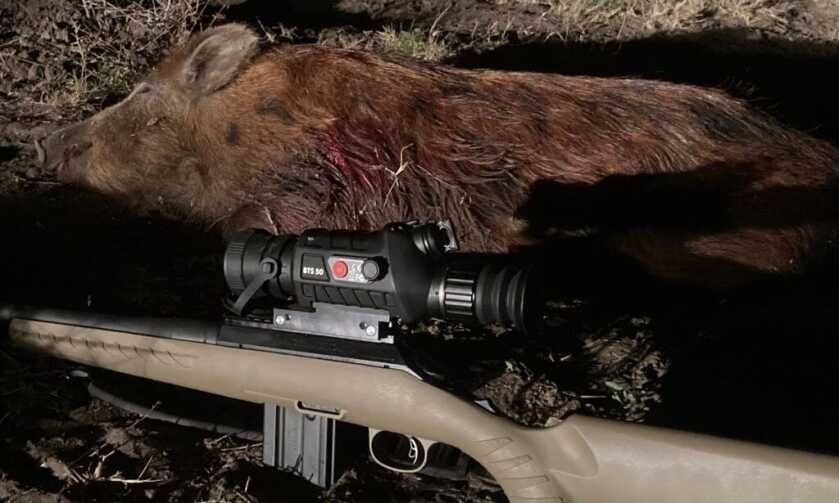
I was able to spot two different groups of feral pigs from beyond 400 yards and walk them up. When the distance was closed to inside 200 yards the stalk became more reliant on the thermal optic. Watching the pigs and paying attention to their actions and reactions to sounds I made crunching dry brush allowed me to easily close to inside 100 yards. The clarity of the image also allowed me to discern whether the pig was quartering toward me or away from me. This allowed for easy shot placement on both of my pigs, both shot quartering toward me.

Due to the highest magnification being 4x on the rifle scope, shooting accurately beyond 200 yards can be challenging, but not impossible. I was able to hit a 5×7 inch steel plate easily at 200 yards, Some of the folks that got to test out the clip-on were able to easily make hits out to 500 and 600 yards on steel plates, but they utilize the magnification and reticles of their own scopes to enhance imaging.
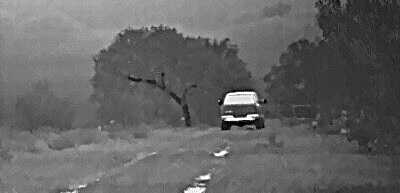
All of you video mavens don’t despair, you will be able to post video on your blog, vlog, or websites. The riflescope is able to video and take still images using additional accessories. The handheld will also take still images as well as video as it comes from the factory and download them by using the proper connections.
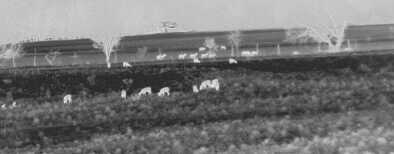
As with all my reviews I try and offer pluses and minuses, so here they are.
Least liked feature- The automatic calibration resets, I figured that if the optic thought a recalibration was needed then by all means recalibrate. This however leads to 4 instances of the image locking up while I was trying to get settled on a moving pig, one time as I was prepping the trigger. Luckily, I was able to hold off on breaking the shot and the pig settled in one spot again and a successful shot was made. Perhaps setting up the optic to recalibrate on command would be better, so this one is really a learning issue and getting used to the optics nuances.
Biggest Disappointment- I wish the power source was universal to all units, having to keep track of different cords, chargers, etc. is frustrating.
Best Surprise- even though it’s not listed, a quick call to Burris showed that a pair of CR123a batteries could be substituted for the 18650 rechargeable battery.
Most liked feature- clarity of image, the ability to positively identify targets out at 400 yards is a major bonus. I cannot overemphasize the quality of the image given to the user, it is amazingly clear.

Burris has a winner here, considering the price point and what you get. These should be hard to keep on store shelves. Finding what Matters just got easier!
For more information and pricing go to Burris Optics.




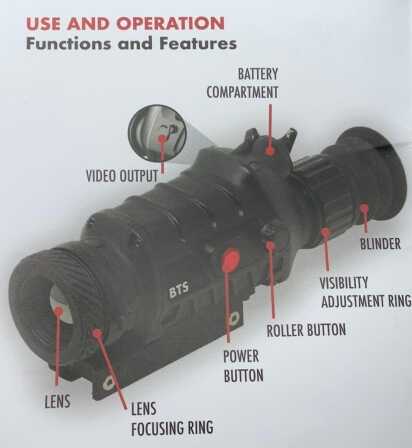

I would be interested if they’ve eternal available with much greater magnification. O mean they make a 3-12X handgun scope and can only make this a fixed 4X??? Come on!!!
It is not a fixed 4x, it is variable although 4 power is the top end. If more power is what you want, I’d recommend either getting the clip on or using the rifle scope as a clip on.